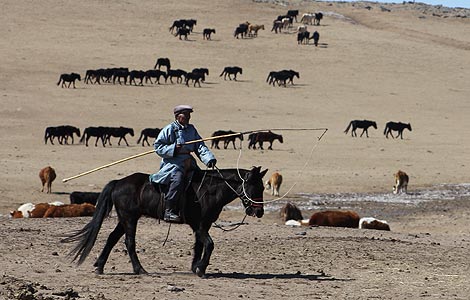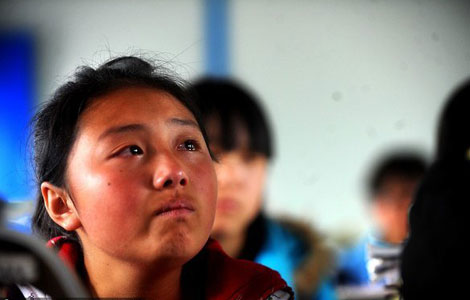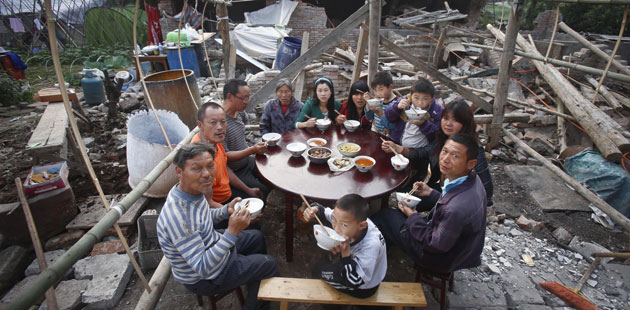Problems remain after cleanup of Hejiang River
Updated: 2013-07-09 21:20
(chinadaily.com.cn)
|
|||||||||||
The local environmental protection bureau and authorities should be primarily responsible for the heavy metal pollution in the Hejiang River, said a Southern Metropolis Daily article (excerpt below).
The government in Hezhou, the Guangxi Zhuang autonomous region, shut down 112 illegal metal mines along the Mawei River, a tributary of the Hejiang River. Seventy nine of the shuttered mines were verified as sources of pollution of the Hejiang River, threatening tens of millions of people in the Pearl River Delta.
But the events leading up to the pollution incident, which was brought under control quickly, remains uncertain.
Since July 1, fish died off in the Hejiang River and initially, the Hezhou environmental protection bureau did not find any problems with the water. Fish then died in large amounts in the Hemianshi section of the river on July 5. The city environmental authority conducted a second round of examinations and again didn’t find anything wrong because, according to the Hezhou government, "of its limited detection means".
As more and more fish died, the Hezhou government reported the case to the Guangxi environmental protection bureau. From then on the authorities began a serious assessment of the problem.
Ideally, the Hezhou environmental protection bureau should have discovered the pollution with their first water examination. It is irresponsible for the city government to support the local environmental watchdog's excuse that it had "limited detection means", because the city-level environmental watchdogs are mainly responsible for detecting heavy metal pollution.
The supervisory authorities of Hezhou should also be blamed for their negligence. More than 100 illegal mines were chugging away in Hezhou without any stoppage of work when the dead fish turned up.
In January last year, a river of dead fish exposed similar pollution in Guangxi.
About 20 tons of cadmium leaked into the Longjiang River from two mining companies in upstream Hechi city, polluting up to 300 kilometers of the river. Its peak concentration was 80 times the allowable limit, seriously affecting 3.5 million people in downstream Liuzhou city.
There should be a subsidization system among provinces along major rivers. Guangdong province, for example, in the lower reaches of major rivers should subsidize provinces in the upper reaches of rivers with the help of the central government to help poorer regions deal with polluting industries, most of which fuel local GDP growth.
A similar mechanism tested successfully last year between Anhui and Zhejiang provinces for the Fuchun River. Currently, it is impossible for poor regions in China to simply cut out polluting industries from their economies.
Related Stories
Mining firm confirmed to have polluted S China river 2013-07-08 23:25
City identifies culprit in river pollution 2013-07-08 20:21
Naked truth about river pollution 2013-07-08 13:23
River pollution sparks criticism 2013-07-08 02:52
Today's Top News
Air crash victims' families arrive in SF
China's inflation grows 2.7% in June
US mulls hastening withdrawal from Afghanistan
Laden's life on the run revealed
Premier Li lauds Guangxi's potential
Mining firm confirmed to have polluted S China river
Legislation urged to guarantee nuclear security
Ex-rail chief sentenced
Hot Topics
Lunar probe , China growth forecasts, Emission rules get tougher, China seen through 'colored lens', International board,
Editor's Picks

|

|

|

|

|

|





